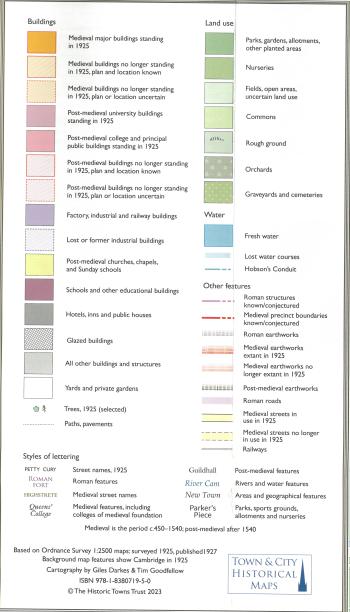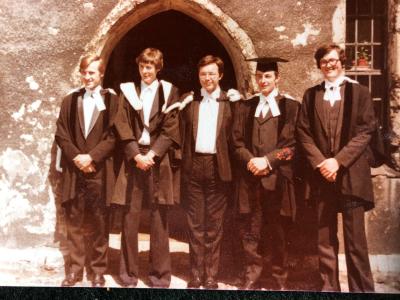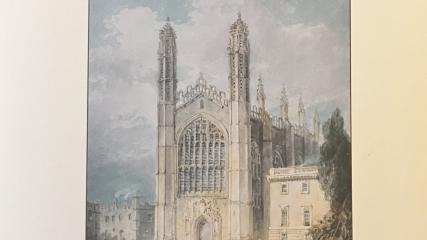Historical map of Cambridge paints a portrait of the past
A new map that shows the location of Cambridge buildings, industries and green spaces since the Middle Ages has recently been released. Produced by the national charity the Historic Towns Trust, the map is at a generous scale of 1:2500 (about 25 inches to the mile) and also includes an introduction with a history of the town, as well as an extensive gazetteer with further details of churches, University sites, civic and public buildings and much more. It gives an overview of the history and topography of the city, showing the many layers of occupation over the centuries, from the Roman period onwards. Roads, the river, markets and famous fairs, religious houses, and from the 13th century the university, created a complex web of activities, interests, and settlers.
This is the sixteenth map produced by the Trust, which has published similar maps of Oxford, Coventry, and Winchester, amongst others. The Trust's ambition is to have a representative national coverage that will provide at least one volume of the British Historic Towns Atlas for every historic county or regional authority in Britain by 2050.
The base for the Cambridge map is the 1925 Ordnance Survey and it incorporates much new information from recent documentary and archaeological research. It continues Cambridge’s story into the 19th and early 20th centuries, and uses a much wider range of colours and symbols to distinguish features.
Alumnus James Winterbotham (m1976) is a Trustee of the Historic Towns Trust. He tells us about his involvement with the charity and his ambitions for its future:
“After reading History and Anglo Saxon, Norse and Celtic at Corpus and taking an MPhil at the Courtauld Institute of Art in London (1979-81), I abandoned academia for a career in the City: I had ‘left the groves for the fleshpots’ as Professor Ray Page, former Librarian at Corpus and my Tutor in Old Norse runes, put it to me!
Other than an enthusiasm for history and for maps, my role is to help with the transformation of the Trust – we are raising significant funds to broaden our reach, produce more maps and town atlases, and develop our educational and community outreach programmes, at the same time becoming generally more commercial – not something academics are used to. I like to think of our maps as the Pevsners of cartography, one day covering the whole of Britain, and on the bookshelves of everyone interested in the history of British towns, whether native or incomer.
Coming from a business background I can see huge potential for our map sales to grow, each sale contributing to the funding of the next map project. So I have been learning fast about the publishing industry, web based selling and social media – we have a brilliant young trustee with a background in marketing who has generated a huge following for our Cambridge launch – 35,000 hits! We have a pipeline of new maps coming – Perth, Bath and Ripon in 2024 – and I am rolling up my sleeves to get an Ipswich map off the ground.
It has all sparked a renewed interest in medieval history, but while my focus as an undergraduate was the politics of the Anglo Saxon kingdoms, I now find landscape, social history and the lives of the ordinary people in history infinitely fascinating – and have been picking the brains of (Corpus Life Fellow) Professor John Hatcher for a project local to Suffolk where I now live.
An exciting part of what we are doing at HTT is a programme to take our maps into schools. A generation of children are growing up with digital mapping, but the pleasure of any physical map is being able to wander about and find those interesting nuggets of information – who knew there was a workhouse on the site of the Master’s Lodge garden?”
James (second from left) with his fellow M staircase Corpuscles Anthony Jenkins, Stephen Plunkett, Tony Marshall and Michael Fletcher in 1979.
An Historical Map of Cambridge, published by the Historic Towns Trust (ISBN 978-1-8380719-5-0) is available from all good bookshops and on-line retailers.



